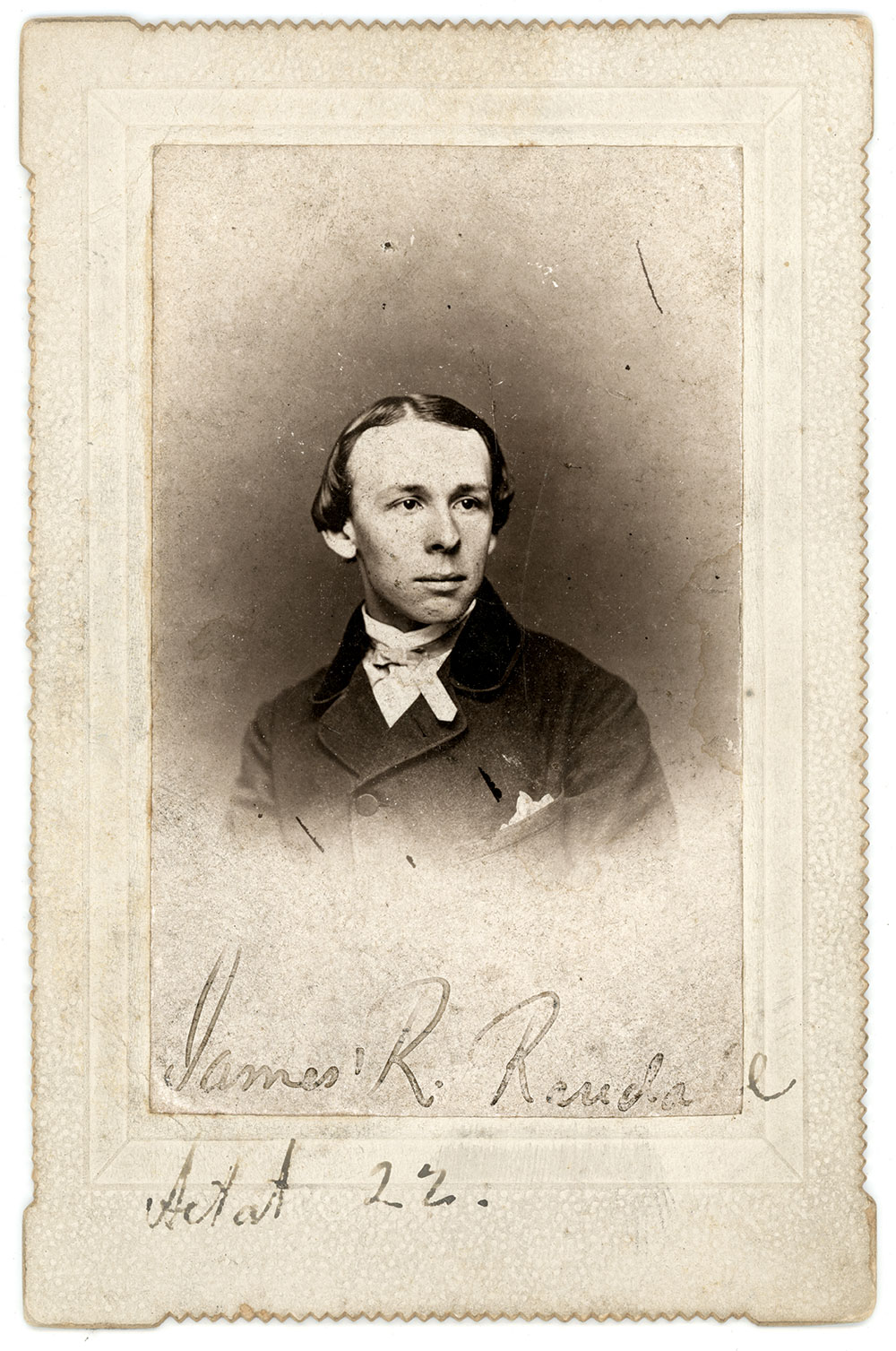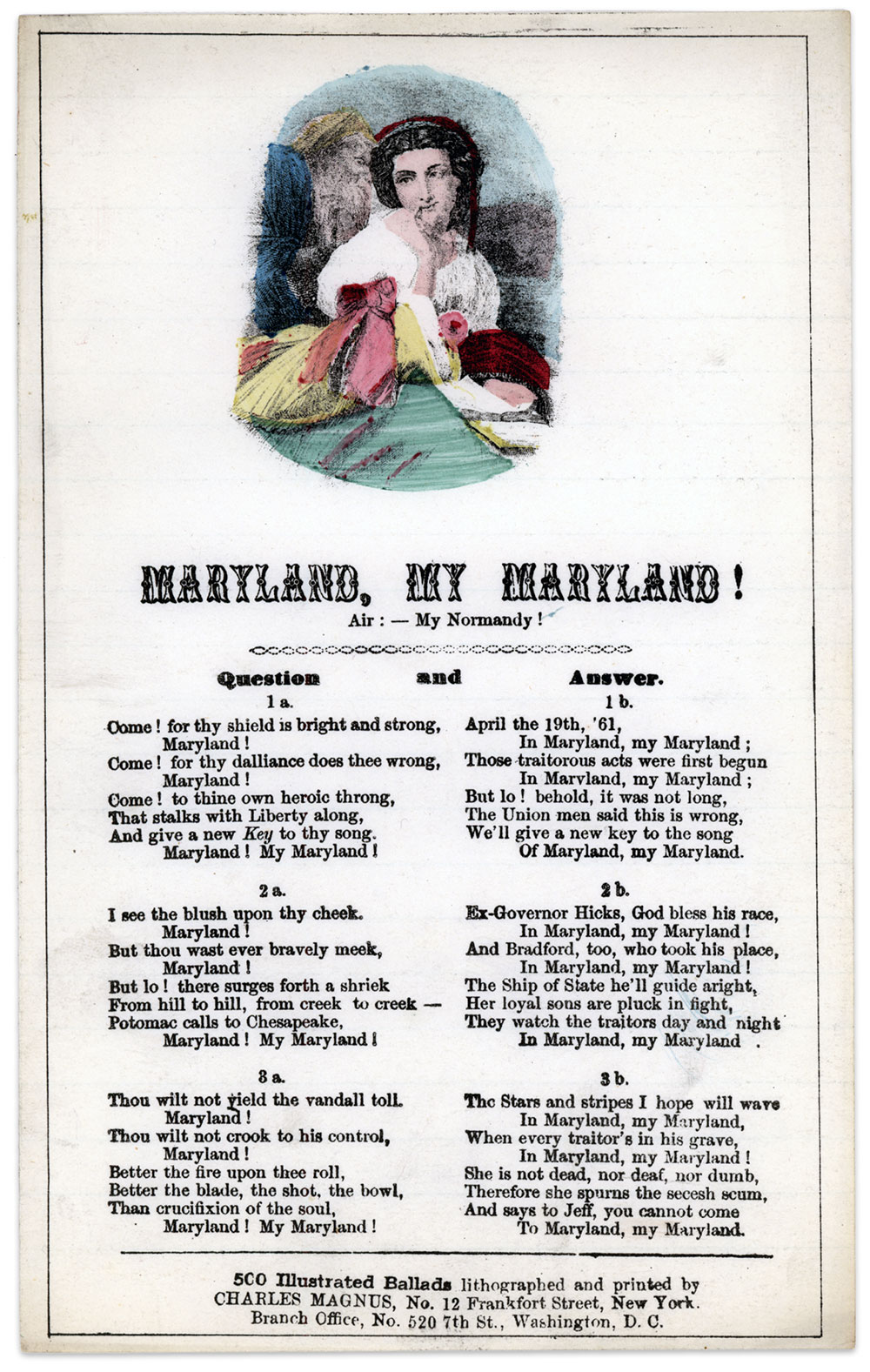The Confederate States of America did not have an official anthem. However, several songs popularized during its four years in existence stirred the soul of the fledgling nation. The playlist includes “God Save the South,” “Dixie’s Land” and “The Bonnie Blue Flag.” All three tunes contain the stuff of which national anthems are composed.
One other top song is “Maryland, My Maryland.” Written as a poem and adapted to music soon thereafter, it became wildly popular throughout the South. Celebrated spy Belle Boyd was a fan, describing the tune in her 1865 memoir as “the ‘Marseillaise’ of the South.”

The young man who penned the poem is pictured here: James Ryder Randall, a Baltimore native born on New Years’ Day 1839. He displayed an aptitude for writing at an early age, and honed his abilities in prep school at Georgetown University. He left the institution and traveled abroad during his teen years, perhaps for health reasons. Upon his return to the U.S. in 1858, he stopped briefly in New Orleans, before accepting a position as an English literature professor at Poydras College in Pointe Coupée.
In April 1861, Randall received news of the clash between pro-secession rioters and the 6th Massachusetts Infantry on April 19 as it marched through Baltimore on its way to protect Washington, D.C. He also learned that one of his former classmates, Francis X. Ward, numbered among the fatalities. A distraught Randall penned the poem by candlelight during a sleepless night on April 26. He sent the poem to the New Orleans Delta the next day. The newspaper published it anonymously in its Sunday edition on May 5.
The poem is a rallying cry for Marylanders to rise and take up arms to defeat the tyrannical “Northern scum” invading the homeland.

The words fired the souls of Southern loyalists across the Confederacy. According to one account, the stanzas were read to his mother in Baltimore. She exclaimed, unaware of its author, “Oh, had they been my son’s!” Hetty and Jennie Cary, sisters of a wealthy Baltimore family, received credit for setting the words to music.
Union-loving Marylanders and other Northern loyalists did not appreciate the poem-turned-song. The Oct. 11, 1862, issue of Harper’s Weekly included a satirical version prompted by the failure of the Confederate invasion of the North that ended at the Battle of Antietam. It began, “AH me, I’ve had enough of thee, Maryland, my Maryland!”
Randall went on to enlist in the army but was rejected due to respiratory problems. He fled Louisiana when Union troops invaded, and later had business dealings with the navy at Wilmington, N.C. After the war ended, he enjoyed a successful career as journalist and editor for The Augusta Chronicle in Georgia, which he adopted as his home state. He died in 1908 at age 69.
By this time, the song had been established as a de facto state standard against a backdrop of the broader narratives of The Lost Cause, Reunification and Jim Crow. Maryland legislators adopted it as the official state song in 1939; four years after the state’s governor vetoed a similar bill due to its objectionable lyrics.
The lyrics have long been a source of division. The first of many legislative bills written to change or remove the song dates to 1974. In early 2021, the Maryland General Assembly voted to repeal the song. Republican Gov. Larry Hogan signed the bill on May 20, 2021.
SPREAD THE WORD: We encourage you to share this story on social media and elsewhere to educate and raise awareness. If you wish to use any image on this page for another purpose, please request permission.
LEARN MORE about Military Images, America’s only magazine dedicated to showcasing, interpreting and preserving Civil War portrait photography.
VISIT OUR STORE to subscribe, renew a subscription, and more.

